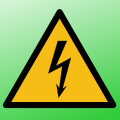 As part of the constant improvements we make to our products, we are at the end of an security update of the products designed to be connected to hazardous live voltages. We take this opportunity for an overview of our products to specify what you can do without risk and what you must avoid doing...
As part of the constant improvements we make to our products, we are at the end of an security update of the products designed to be connected to hazardous live voltages. We take this opportunity for an overview of our products to specify what you can do without risk and what you must avoid doing...
What is a hazardous live voltage?
A hazardous live voltage can cause an electric shock or a burn to the user. Usually, a circuit is said to be hazardous live when it goes above 60 V for direct current or 30 V r.m.s. for alternating current, and when there is no device to limit the current to very low levels.
Any device which is connected at the same time to a said non-hazardous electric circuit (such as a USB bus) and to a hazardous live circuit must be able to guarantee the isolation between the two electric circuits, so that the non-hazardous circuit stays safe. This prevents you from getting electrocuted by your mouse when you connect a Yocto-Watt to a hazardous live circuit.
The isolation between the circuits must be suitable with regards to the voltage. It's not enough the leave some more space between the circuits on an isolating material to ensure a good protection: with hazardous live voltages, electricity has amazing properties to create paths within isolating materials. To convince you of this, have a look on the Internet on videos with Lichtenberg figures made by electricity in wood...

Lichtenberg figures grooved by electricity in wood (from Bdr9678@Wikipedia, CC BY-SA 4.0)
The omnipresent source of hazardous live voltage in everyday life is the mains socket. Contrary to widespread belief, a mains socket does not guarantee a maximum voltage of 230 V (or 110 V r.m.s. depending on the country): it is expected that the outlet may experience temporary surges of several seconds above 1400 V r.m.s., and all devices connected to the mains supply are expected to withstand this without risk to the user.
Which modules are protected against hazardous live voltages?
The following Yoctopuce modules are designed to be connected without risk to hazardous live voltages up to 250V AC r.m.s., including a protection against temporary overvoltage expected on mains sockets, also called overvoltage category II primary circuits:
- The Yocto-Volt
- The Yocto-Amp
- The Yocto-Watt
- The Yocto-MaxiPowerRelay
- The Yocto-PowerRelay-V3
The Yocto-PowerRelay-V2 (as well as older revisions of the Yocto-Volt, Yocto-Amp, Yocto-Watt, and Yocto-MaxiPowerRelay) doesn't have all the isolation specificities required by current standards for category II primary circuits up to 250V AC r.m.s. So, use the Yocto-PowerRelay-V2 only for category II circuits limited to 150V AC r.m.s., or for circuits up to 250V AC r.m.s. protected by a transformer (secondary circuits) or a surge arrester.
Don't use any other Yoctopuce modules with hazardous live voltages. In particular, the Yocto-Relay is designed to commute signals, but in no way hazardous live voltages.
Recent hardware improvements
The pictures below show you the latest hardware changes up to this day to the Yocto-Volt, Yocto-Amp, Yocto-Watt, and Yocto-MaxiPowerRelay. As always, these improvements don't change the size of the circuits, or their fixation points, or their software compatibility.
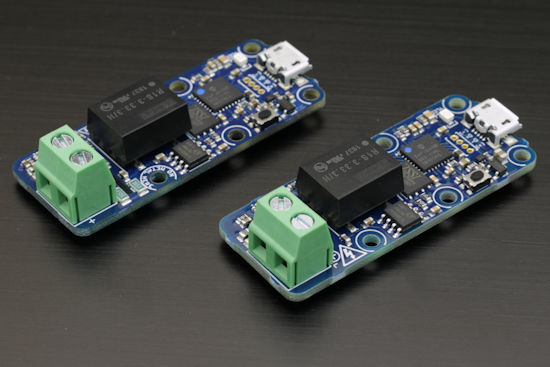
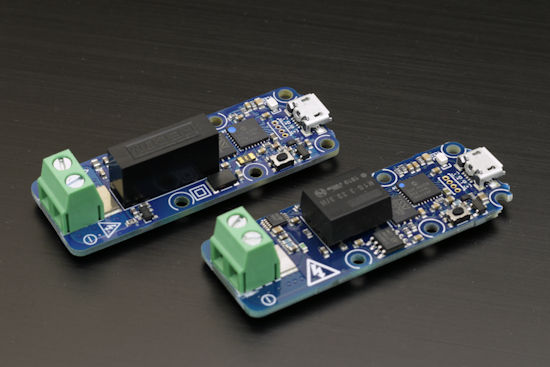
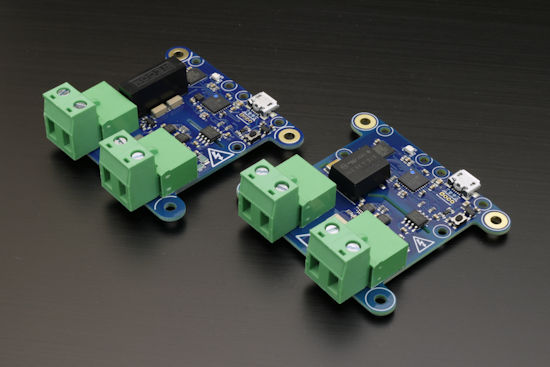
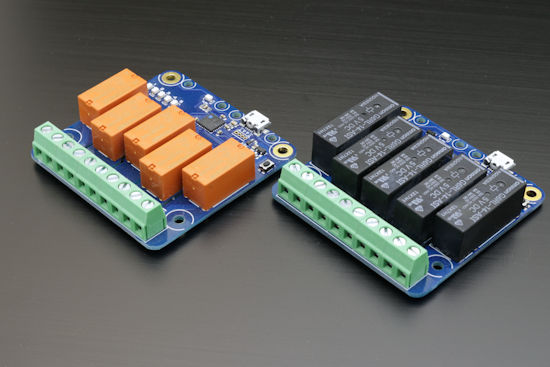
Hardware evolutions: no change in the device size!
The most visible changes are the use of the new black OMRON relay, better isolated and more powerful, and the new strengthened isolated DC/DC converter used in the Yocto-Amp and the Yocto-Watt. For the Yocto-Volt, we added an additional protection by impedance. The new version of the Yocto-Watt also includes an external oscillator in order to better the time accuracy of the calculation of the total consumed energy. Recent versions have an improved safety markings.
The change of DC/DC converter in the Yocto-Amp and on the Yocto-Watt unfortunately implies a price increase of 15% for these modules. However, if you need a large quantity of these modules to work on voltages exempt from temporary overvoltages, we can still manufacture the previous revision at the original price.
Safety recommendations
Before you connect one of these modules to a hazardous live voltage, take the time to read the security recommendations in the documentation, in particular the whole of chapter 1 and paragraph 2.3 about Safety isolation. We did our best for the safety advice to be useful and not too boring to read, so to stay a loyal customer for many more years, don't skip it!


